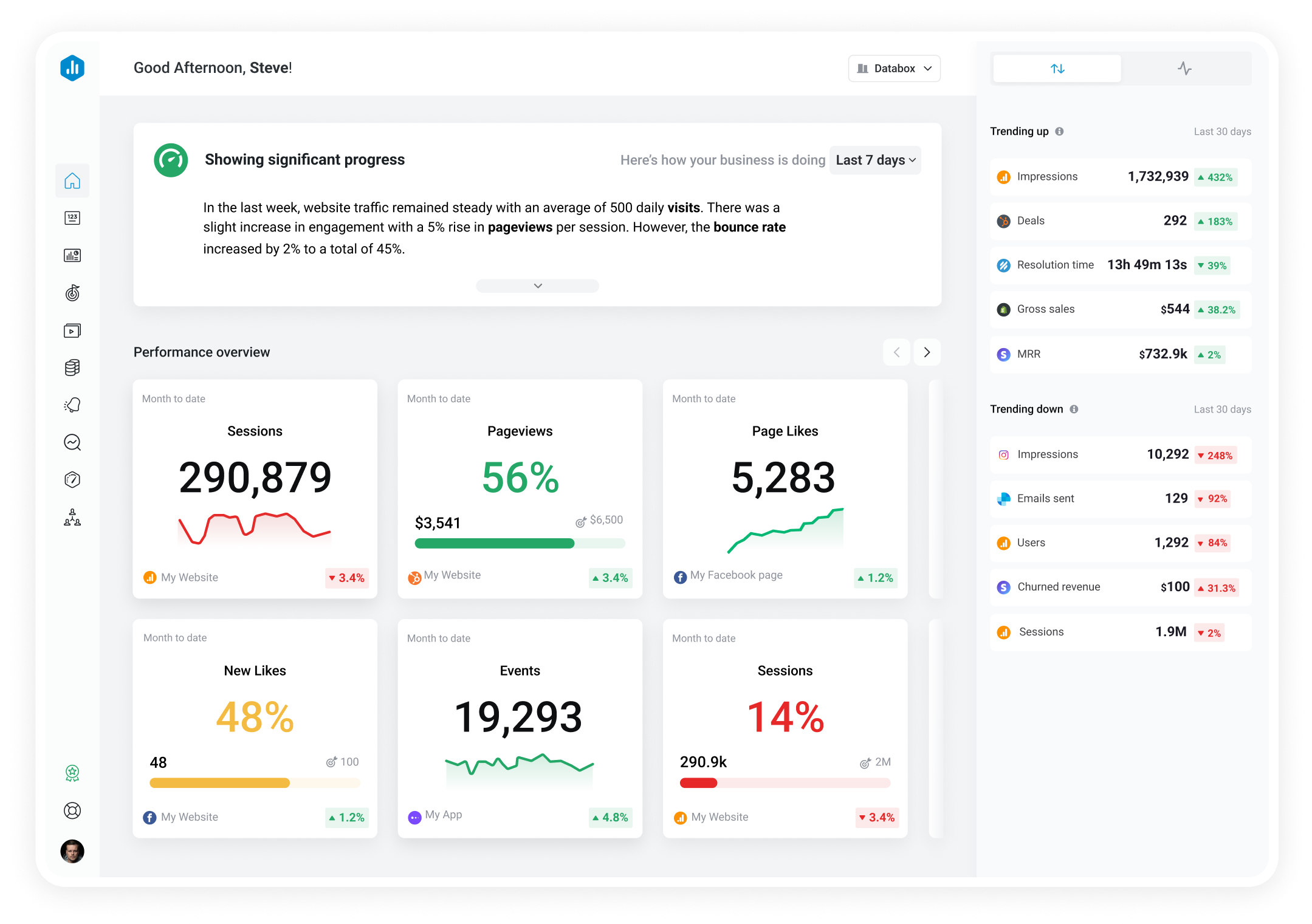Track all of your key business metrics from one screen
GET STARTED
 Microsoft Advertising
Quality Score by Campaign
Microsoft Advertising
Quality Score by Campaign Quality Score by Campaign is a metric that rates the relevance and quality of ads within a specific campaign, based on factors such as ad relevance, landing page experience, and expected click-through rate. Higher scores indicate better ad performance and can result in improved ad placement and lower costs.
With Databox you can track all your metrics from various data sources in one place.

Used to show comparisons between values.
Databox is a business analytics software that allows you to track and visualize your most important metrics from any data source in one centralized platform.
To track Quality Score by Campaign using Databox, follow these steps:
 Goals
Goals Scorecards
Scorecards Metric Digest
Metric Digest Metric Builder
Metric Builder Data Calculations
Data Calculations Performance Screen
Performance Screen